“Such as” is a common phrase, but how you use it can affect your text’s meaning.
Let’s take a closer look at exactly when to use a comma before such as with some examples along with key dos and don’ts.
Trick #1: When to use a Comma Before Such As
Step 1: Remove the part of the sentence that starts with “such as“.
Step 2: Ask yourself, “Does the meaning of the sentence change?”.
Step 3: If the answer is “no,” then you definitely need to use a comma before “such as“.
This means the phrase is a nonrestrictive clause, or not essential to the sentence.
You need a comma to make this fact clear. The comma is like the glue that holds the two independent parts of the sentence together.
You could remove the nonrestrictive phrase “such as dermatologists,” and the rest of the sentence would still carry the same meaning. “Doctors have to go to medical school for a long time” is true either way.
Including the example of dermatologists adds an explanatory detail.


Trick #2: When NOT to use a Comma Before Such As
Step 1: Remove the part of the sentence that starts with “such as“.
Step 2: Ask yourself, “Does the meaning of the sentence change?”.
Step 3: If the answer is “yes,” then you don’t need to use a comma before “such as”.
This means the phrase you removed is a restrictive clause and is essential to the sentence.
Since the phrase is a necessary part of the sentence, it’s already naturally part of the sentence flow. As a result, you don’t need any comma glue to hold the sentence together.
In this example, removing “such as cows and dogs” would suggest that all animals have four legs.
That would exclude birds, fish, and other animals that have no legs at all and insects such as spiders that have way more appendages.
Main Comma Before Such as Takeaways:
- To determine whether you need a comma before such as, try removing the phrase starting with “such as” and see if the meaning changes.
- Restrictive clauses starting with “such as” don’t need a comma.
- Nonrestrictive clauses beginning with “such as” should start with a comma.
- Restrictive clauses are essential, while nonrestrictive clauses can be removed without changing the meaning of the sentence.
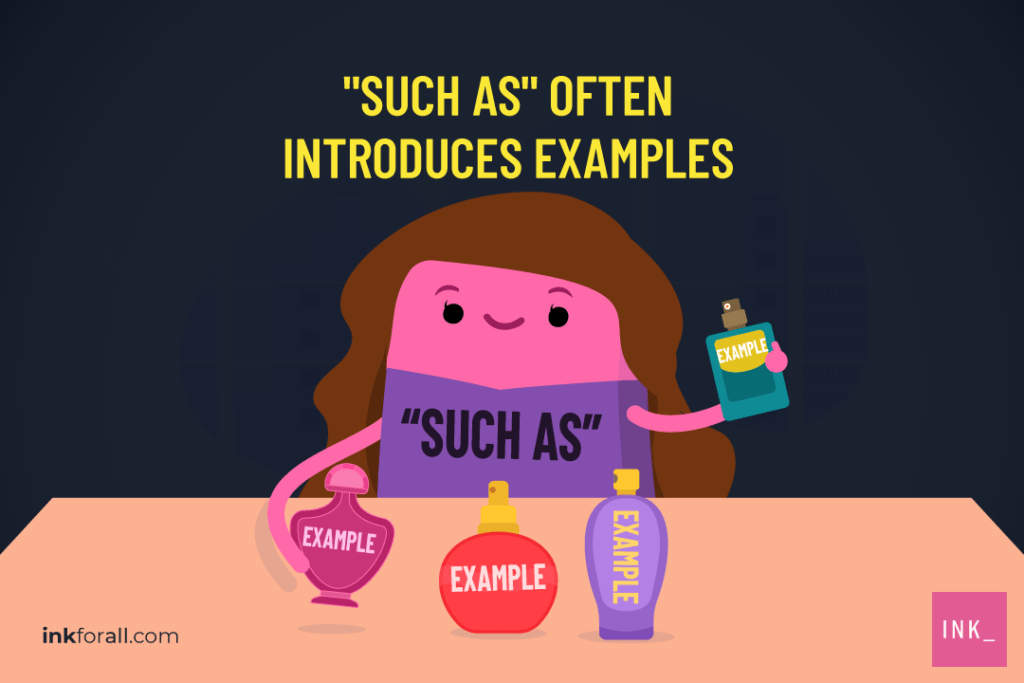

Examples of Using a Comma Before Such As in a Sentence
As you get the hang of commas and “such as,” we have a tip to help make it easier.
All you have to do is remove the phrase and see whether the rest of the sentence is still true to the original meaning.
If you take out “such as lemon and lime,” the meaning of the sentence changes. You’d suddenly be saying all fruit has a citrus flavor rather than clarifying that fruits like lemon and lime taste like citrus.
In these examples, it could go either way. It’s important to know the intent of the writer.
If the author isn’t good at all sports and soccer and basketball are examples, then a comma is necessary.
However, if the subject is good at some sports but not soccer and basketball, then no comma should be used.
What Does “Such As” Mean?
“Such as” is a more formal synonym for “like”. It frequently introduces an example. There may be one item or several, all elaborating on the idea that came earlier in the sentence.
Thanksgiving, Christmas, and St. Patrick’s Day are all examples of holidays the author loves.
More on Restrictive vs. Nonrestrictive Clauses When Using Such As
Putting a comma in front of “such as” will depend on whether the clause that comes next is restrictive or nonrestrictive. Don’t worry—this might seem like a complicated concept, but you’ll be a pro in no time.


Restrictive Clauses: You Don’t Need the Comma
A restrictive clause is also known as an essential clause because it’s a necessary part of the sentence. In other words, if you remove a restrictive clause, the meaning of the sentence would no longer be the same. Restrictive clauses that use “such as” typically do not require a comma first.
If you remove “such as crossword puzzles and Sudoku” from the sentence, the meaning will change. That makes the clause restrictive, and it would not require the use of a comma.
Nonrestrictive Clauses: You Need the Comma
A nonrestrictive clause with “such as” at the end of a sentence must begin with a comma and end with a period.
A nonrestrictive clause isn’t essential to a sentence. It may describe the object of that sentence, but if you omitted the clause, it won’t change the sentence’s overall meaning. We use these clauses to include extra details in your sentence.
It’s common to use commas to help separate a nonrestrictive clause from the rest of the sentence. A nonrestrictive clause beginning with “such as” is in the middle of a sentence, it’s usually offset with commas.
Is it good to remind the audience that they make great wine in Tuscany? Sure, but even if you remove the phrase“where they make incredible wine,” the rest of the sentence carries the same meaning.
“Such as” can be a handy tool when utilized correctly. Use it to expand on an idea, paint a more specific picture, and be sure your audience understands what you’re trying to say. All it takes is a little curly comma, and you’re in business!
Do you Need a Comma Before Such As? Test out Your New Skills
Comma Before "Such as" Question #1
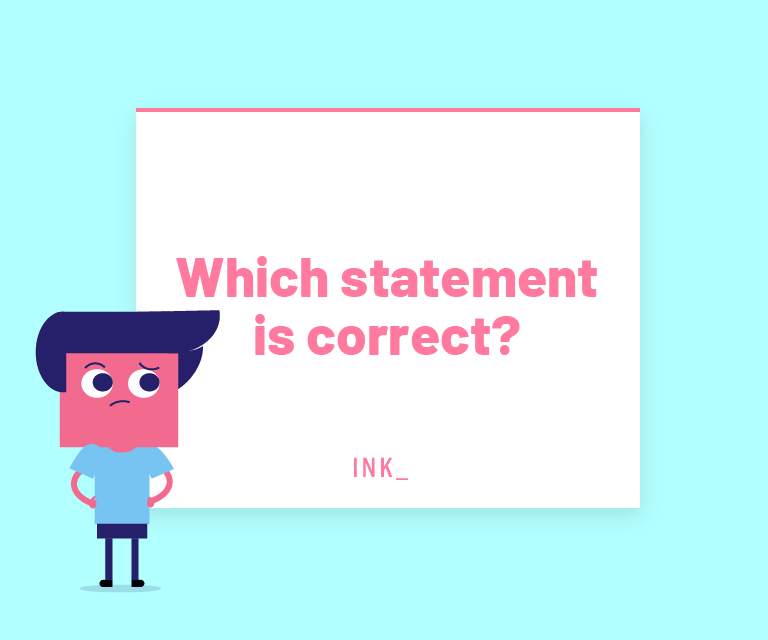

The answer is B. A restrictive clause is necessary to complete the sentence’s meaning. Since it is an essential part of the sentence, it is not set off with a comma.
Comma Before "Such as" Question #2
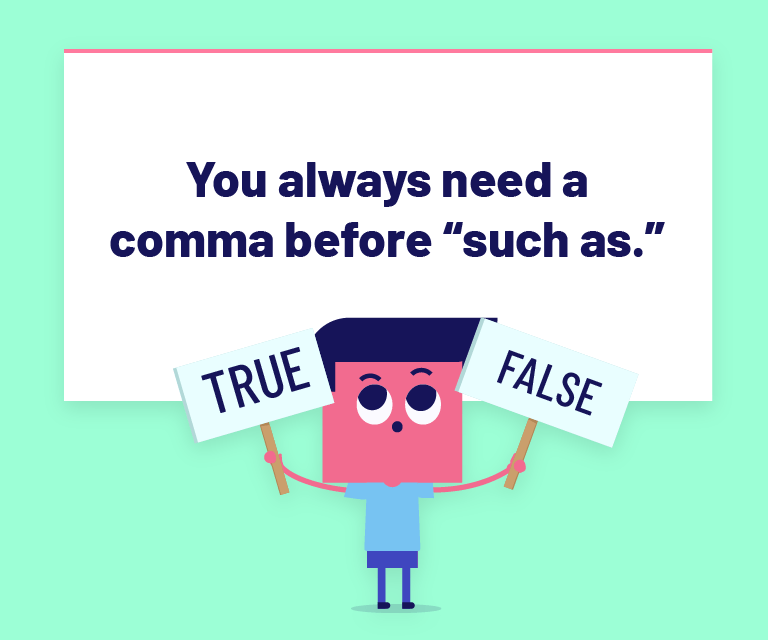

The answer is FALSE. Whether or not you need a comma before “such as” depends on if the phrase starting with “such as” is a restrictive or nonrestrictive clause.
Comma Before "Such as" Question #3
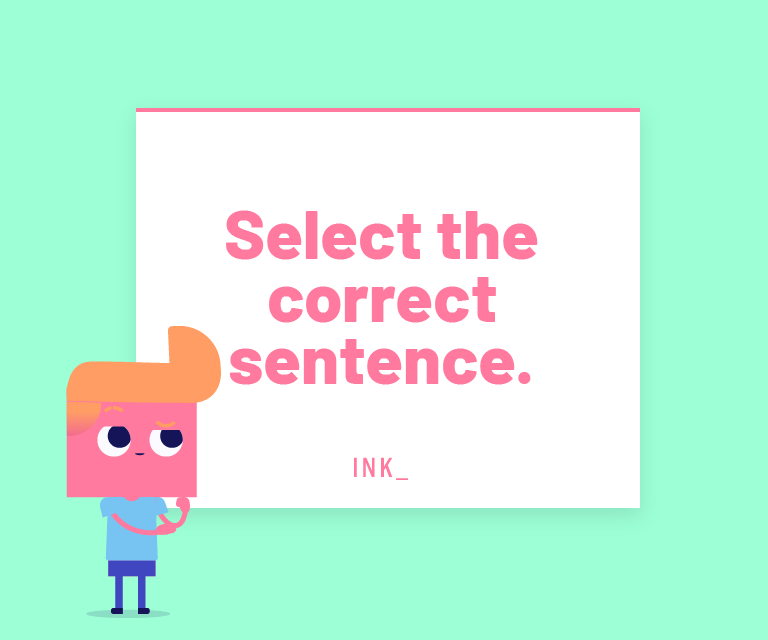

The answer is C. If you remove the phrase “such as critical thinking,” the meaning of the sentence changes. This means that the phrase is a restrictive clause and a crucial part of the sentence. As a result, you don’t need a comma before “such as.”
Comma Before "Such as" Question #4
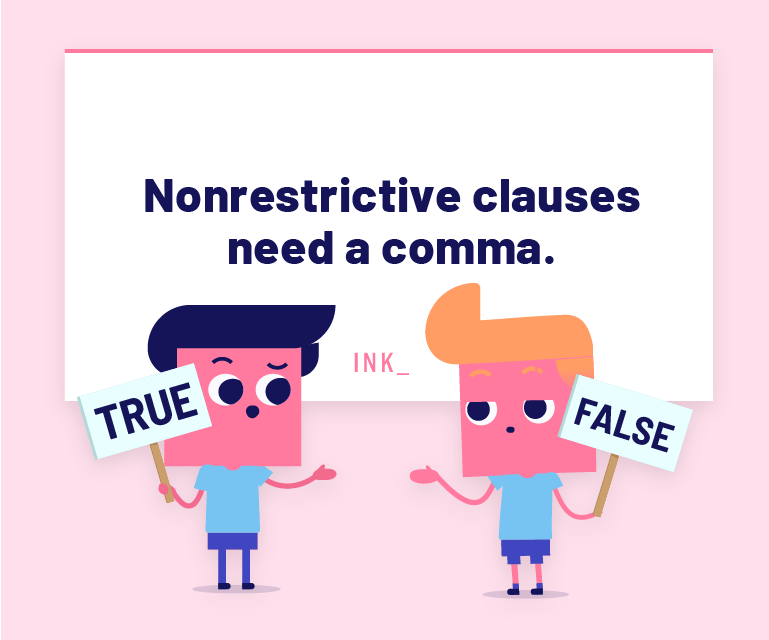

The answer is TRUE. Nonrestrictive (or nonessential) clauses aren’t a critical part of the sentence. Instead, they often add information that’s nice to have but not necessary to the sentence’s meaning.
Comma Before "Such as" Question #5
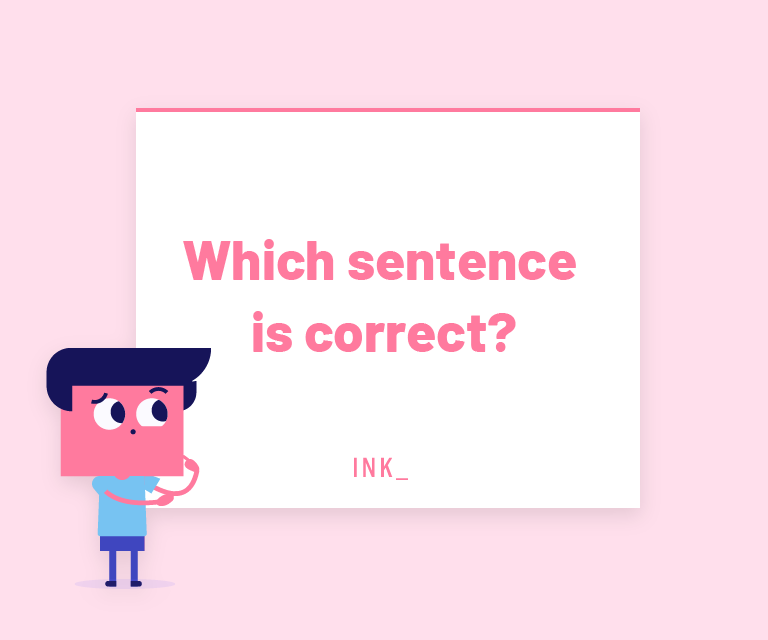

The answer is D. If you remove “such as early morning rays,” the meaning of the sentence does not change. This means it is a nonrestrictive clause and not a crucial part of the sentence. Since it is a nonrestrictive clause, you need a comma before “such as.”
